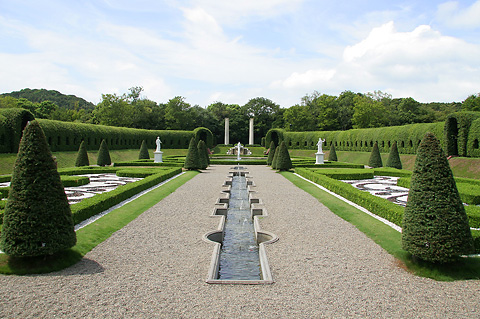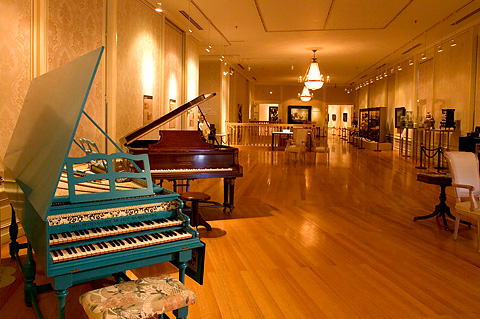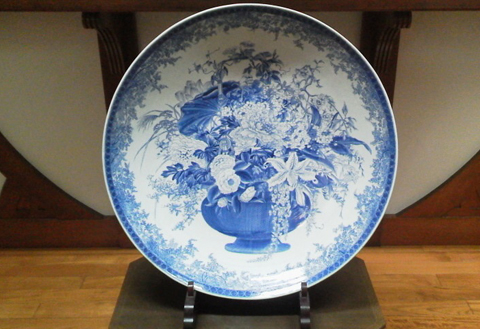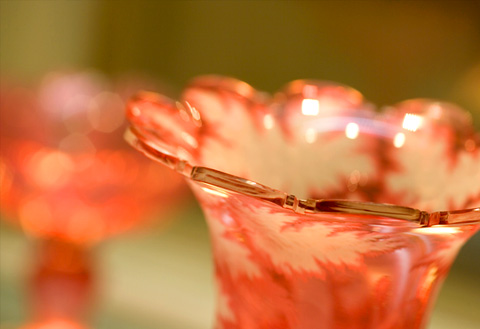Faithfully recreation Dutch palace
Huis Ten Bosch Museum Huis Ten Bosch Museum

It is a museum inside the Dutch palace that has been faithfully reproduced.
Located in the deepest part of Huis Ten Bosch, Palace Huis Huis Ten Bosch. The building has been faithfully recreation with special permission from the Dutch royal family. Based on the history of the Dutch palace, the Huis Ten Bosch Museum is set up in the building. The museum holds special exhibitions three or four times a year that introduce various works from around the world. The collection includes a large number of oil paintings produced in the 17th century, commonly known as the Dutch Golden Age, and prints by MC Escher, who is famous for his trompe l'oeil.
MC Escher's work list is here
Huis Ten Bosch Museum BEST 3
-
BEST1

Baroque garden
A vast Dutch baroque garden behind the palace, with the ultimate in European sculptural beauty. This garden was designed by French landscape architect Daniel Mallow for the Dutch palace in the 18th century, but never realized. in the garden ", the drawings that had been stored in the original Huis Ten Bosch was revived in.
- ■ Nationality
- Netherlands (design)
- ■ Age
- 18th century (design)
-
BEST2

Portrait of Jan Aselein
A copperplate print by Rembrandt, a master of 17th century Dutch painting. Rembrandt made about 300 copperplate prints in his lifetime, but only about 70 copperplates were used for printing. Huis Ten Bosch Museum owns the copper plate itself, which is a valuable example of the Dutch art collection.
* Not exhibited at the current exhibition.- ■ Nationality
- Netherlands
- ■ Age
- Around 1647
-
BEST 3

Between murals (anti-war and peace)
Japan's largest dome-shaped mural "Mural Room". The height is 19m, the maximum width is 11m, and the area is 825㎡, which is equivalent to 412 tatami mats. This mural was completed over four years by up-and-coming Dutch painter Rob Sforte and a total of 40 artists. The title is "Antiwar and Peace".
- ■ Producer
- Rob Sforte
- ■ Age
- Completed in November 1995
Facility information
- Location
- Harbor Town
- Opening hours
- Please specify the date from here and check
- Time required
- Half an hour
- Fee
- Passport applicable to
*Only available to those with a passport.
Palace Huis Ten Bosch
We will guide you in more detail with an audio guide!
* Please use your own smartphone and earphones.
* Not available on PC. Access from your smartphone or tablet.



The exhibition of about 3,000 pieces of porcelain is a masterpiece!
Porcelain Museum Porcelain Museum

Introducing Imari porcelain loved across the sea
The exhibition focuses on Koimari, which was exported to Europe during the Edo period. Japanese porcelain produced in Arita traveled to the world from Dejima, Nagasaki on a Dutch ship, and was enthusiastically loved in Europe. A wide variety of wares were made, starting with blue dyeing, to luxurious ones with plenty of red, indigo, and gold. This museum introduces the history of such porcelain. There are also about 3,000 pieces of porcelain decorated with Arita porcelain, and a small special exhibition that introduces works that you can't usually see.
Porcelain Museum BEST 3
-
BEST1

Between porcelain
A recreation of the Porcelain Cabinet, a porcelain room in the Charlottenburg Palace in Berlin, Germany. A space that can be said to be a symbol of wealth and power, decorated with about 3,000 pieces of expensive porcelain at that time. It can be said that the fusion of Western art and Eastern hobbies is an art that should be imprinted on your eyes.
- ■ Nationality
- Germany
-
BEST2

Color picture tiger figurine
There are various types of Kakiemon style dolls. One of them is this tiger figurine. Although it is a pair of works, the striped pattern is symmetrical as if it were reflected in a mirror. It's a charming face that makes you feel cute when you look at it all the time.
- ■ Nationality
- Japan / Imari / Kakiemon style
- ■ Age
- 1670-1700s
-
BEST 3

Dyed flower basket sentence large plate
At the 1873 Vienna World's Fair in Austria, a large vase that exceeded the height of a person and a platter with a diameter of about 1 m were exhibited, and people not only in Europe but all over the world were amazed at the huge porcelain produced by the Japanese. It remains in the literature at that time.
The platter, which also played a leading role, is currently spending a leisurely time at time at the hotel.- ■ Nationality
- Japan / Arita
- ■ Age
- Late 19th century
Facility information
- Location
- Harbor Town
- Opening hours
- Please specify the date from here and check
- Time required
- 15 minutes
- Fee
- Passport applicable to
*Only available to those with a passport.
Porcelain Museum
We will guide you in more detail with an audio guide!
* Please use your own smartphone and earphones.
* Not available on PC. Access from your smartphone or tablet.


Don't miss the world's largest chandelier!
Glass Museum Diamant Museum

Glittering glass crafts all in one place
Glass Museum, located in the Stadhaus, which imitates the city hall of Gouda, the Netherlands, which is famous for its cheese, introduces glass works from around the world. There are a wide variety of glass types and techniques, such as cutting techniques that increase the brightness, colored glass, and works that use chemical reactions. In the exhibition room on the 2nd floor, works are displayed by technique, mainly Bohemian glass from the Czech Republic. In the 3rd floor exhibition room, you can enjoy the glimmering glass of Venice, the Netherlands, China, and other parts of the world.
Glass Museum BEST 3
-
BEST1

Gold red background white with wind chime Gravure vine morning glory chandelier
A gorgeous chandelier made from 4628 glass parts and 65 glass fire shops. Introducing a chandelier using crystal parts cut in the latter half of the 17th century. In the 18th century, in addition to crystals, those with crystal drops were made, further increasing the luxury. This work uses the Grabure technique to design a morning glory in a fire shop, and combines transparent glass with green and red parts to create an oriental atmosphere.
- ■ Nationality
- Made in France
- ■ Age
- 1840
-
BEST2

Gold liqueur set
It was produced in 1875 at the Russian Imperial Glass Factory, which was founded in 1777. From the beginning, this factory aims to manufacture high-grade glass. It is said that it was used in the palace, using a golden decoration on a green space and a decoration technique called red and green cabochon like beads.
- ■ Nationality
- Russia
- ■ Age
- Nineteenth century
-
BEST 3

Enamel gold Russian candle-shaped goblet with lid
This work was designed by Moritz Knerf for Robmeyer in Vienna, based on the figure of the Russian candles of Marquis Berndorn. An extremely elaborate and beautiful work with an arabesque pattern drawn in enamel throughout.
- ■ Nationality
- Austria J & L Rob Meyer
- ■ Age
- Late 17th century
Facility information
- Location
- Amsterdam City
- Opening hours
- Please specify the date from here and check
- Time required
- 20 min
- Fee
- Eligible to Park Admission Ticket Holders
Glass Museum
We will guide you in more detail with an audio guide!
* Please use your own smartphone and earphones.
* Not available on PC. Access from your smartphone or tablet.


About 700 teddy bears welcome you
Teddy Bear Kingdom Teddy bear Kingdom

A museum full of bears from around the world
Teddy Bear Kingdom is located inside Nyenrode Castle, a recreation of an actual castle in Utrecht, Netherlands. Here, teddy bears, beloved across time and region, are on display. The museum introduces the history, origins, and stories of about 700 bears, including stuffed toys made by Steiff, a German company said to be the creator of Theodoer Roosevelt its name, and bears made by top artists from around the world.
Teddy Bear Kingdom BEST 3
-
BEST1

Giant bear
A giant bear measuring 3.6m tall and weighing 500kg is on display on the first floor Teddy Bear Kingdom. You can take commemorative photos with it.
-
BEST2

Alice Bear
Named "Alice Bear" from the name of Alice Roosevelt, the eldest daughter of the 26th President of the United States, it was specially produced. Theodoer Roosevelt the great-grandson of Theodore Roosevelt, and was introduced on national television programs in the United States.
-
BEST 3

Teddy Bear Kingdom Bear
This bear was released by Steiff in 1998 to commemorate the first anniversary Teddy Bear Kingdom. The costumes worn by the bears were made for Huis Ten Bosch Co., Ltd., and each set is numbered serially.
Facility information
- Location
- Welcome gate
- Opening hours
- Please specify the date from here and check
- Time required
- 15 minutes
- Fee
- Eligible to Park Admission Ticket Holders

We are exhibiting works by teddy bear artists such as Mayumi Yamaura, who is active mainly in Saga and Nagasaki. Please appreciate the work created with all your heart.

















